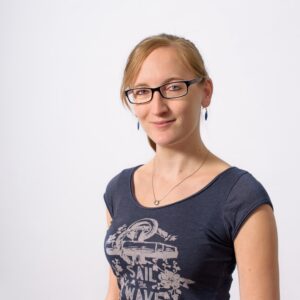
Petr Chlanda
BioQuant, University of Heidelberg
Open access to cutting-edge electron and light microscopy
We provide researchers from Europe and beyond with a synergistic portfolio of imaging services including cryo-EM, super-resolution and intravital microscopy to enable new ground-breaking research that crosses the scales of biology.

EMBL Imaging Centre is offering a 5-day course (13 – 17 October 2025) covering the basic operations of the cryo-lamella tomography workflow, which allows to study cellular samples in their native environment at high-resolution.
Content of the course:
• Theoretical background and practicals delivered by experts in the field
• Sample preparation using plunge- and high-pressure freezing, on-grid lamella preparation, tomography, and basic computational analyses of tomography data
• Open equipment day to explore further
External invited speakers:

BioQuant, University of Heidelberg

Institute of Science and Technology Austria (ISTA)
Organisers:
Contact:
Georg Wolff (georg.wolff@embl.de), Anna Steyer (anna.steyer@embl.de)
To participate in this course please register by clicking on the following button.
The course is limited to 8 participants. Deadline for registration is July 15th 2025. Selected participants will be announced on July 25th 2025. For selection purposes, please note that your application will not be considered without CV and a letter of motivation, stating your background, availability of relevant instrumentation for the cryo-lamella workflow to you, and how this course would be beneficial for your future work.
There is no registration fee. Travel and accommodation need to be covered by the participants.
Practical 1: Sample preparation by plunge freezing and high-pressure freezing
High-resolution electron microscopy requires well vitrified specimen. Depending on the thickness of the sample this can be either accomplished by plunge freezing for thinner specimen, up to a few µm or high-pressure freezing up to ~200 µm.
Transmission electron microscopy (TEM) grids are plasma cleaned to make them less hydrophobic, allowing an even spread of sample. By plunge-freezing cells or purified proteins or individual cells can be vitrified onto the EM grids. A high-pressure freezer is used to freeze thicker specimen such as multicellular organisms or organoids.
The participants will have the opportunity to use:
• GP2 (Leica Microsystems) for freezing adherent cells
• EM ICE (Leica Microsystems) high-pressure freezer to vitrify C. elegans in a metal carrier or using the Waffle-method (Kelley et al. 2022)
Practical 2: On-grid lamella preparation with a cryo-FIB-SEM
After sample vitrification the TEM grid is introduced into the FIB-SEM and the region of interest is identified. Different milling steps with decreasing beam currents are applied to gradually remove cell material (starting from 1 nA down to 30 pA). Understanding the geometry and cutting approaches while practicing on a real sample will give the best understanding of the challenges, throughput and the possibilities imposed by this method.
The participants will have the opportunity to use:
• Thermo Scientific Aquilos 2 to prepare lamellae using AutoTEM
Practical 3: Cryo-Tomography data collection
The TEM grid is introduced into the transmission electron microscope and an overview image of the full grid is taken. After identifying the regions with the lamellae, medium magnification montages are taken to acquire images of the lamellae being able to identify and target regions of interest for high-resolution tilt-series acquisition.
The participants will have the opportunity to use:
Practical 4: Tomogram reconstruction and 3D-segmentation
After collecting on-lamella tilt-series, the data is computationally reconstructed into tomograms to be able to visualize the native content of the cell in 3D. For better visualization and statistical analyses, segmentations of the structures of interest can be done.
There is a wide variety of software available to help answering specific biological questions. We aim to provide a straightforward workflow to easily get from raw-data to segmentation. Getting to know manual and automated tools for segmentation which will help to choose a dataset tailored pipeline to answer relevant biological questions.
The participants will have the opportunity to use: